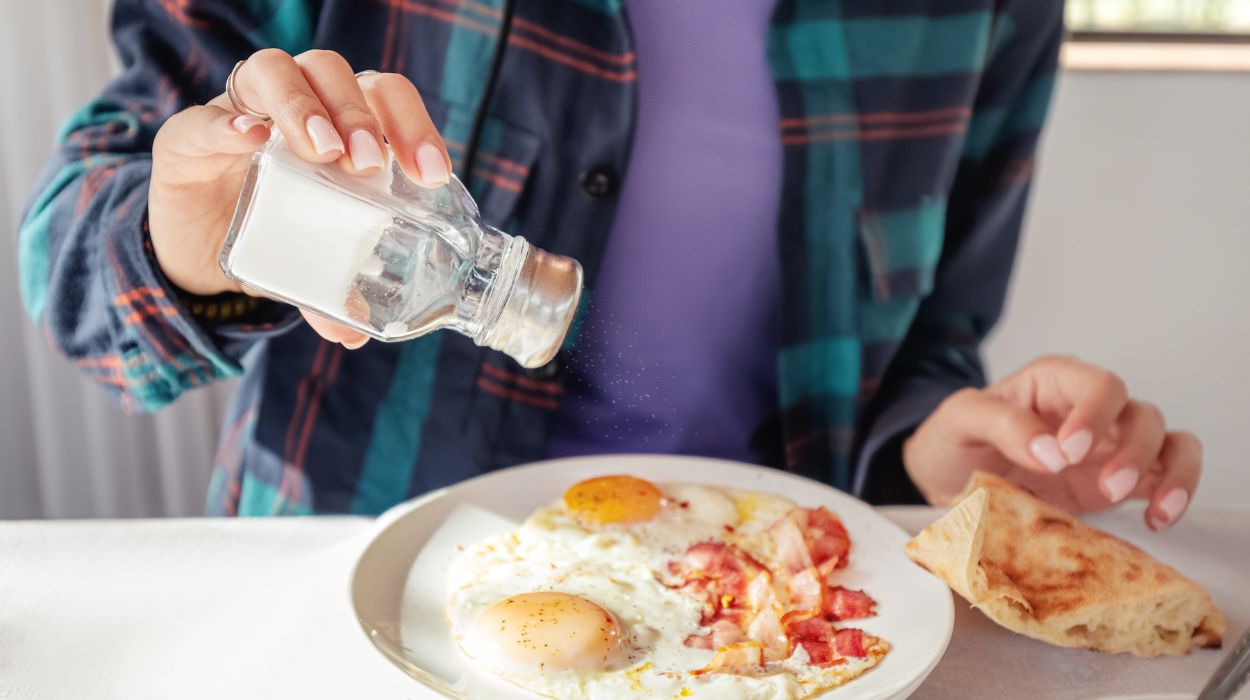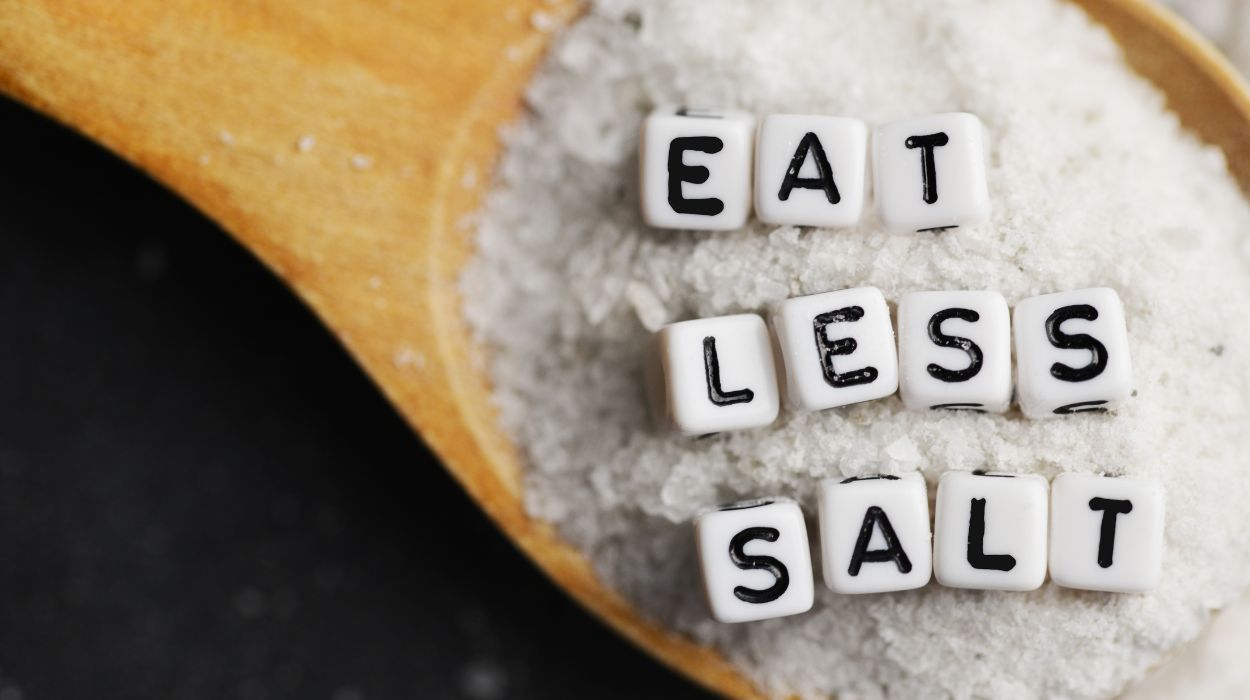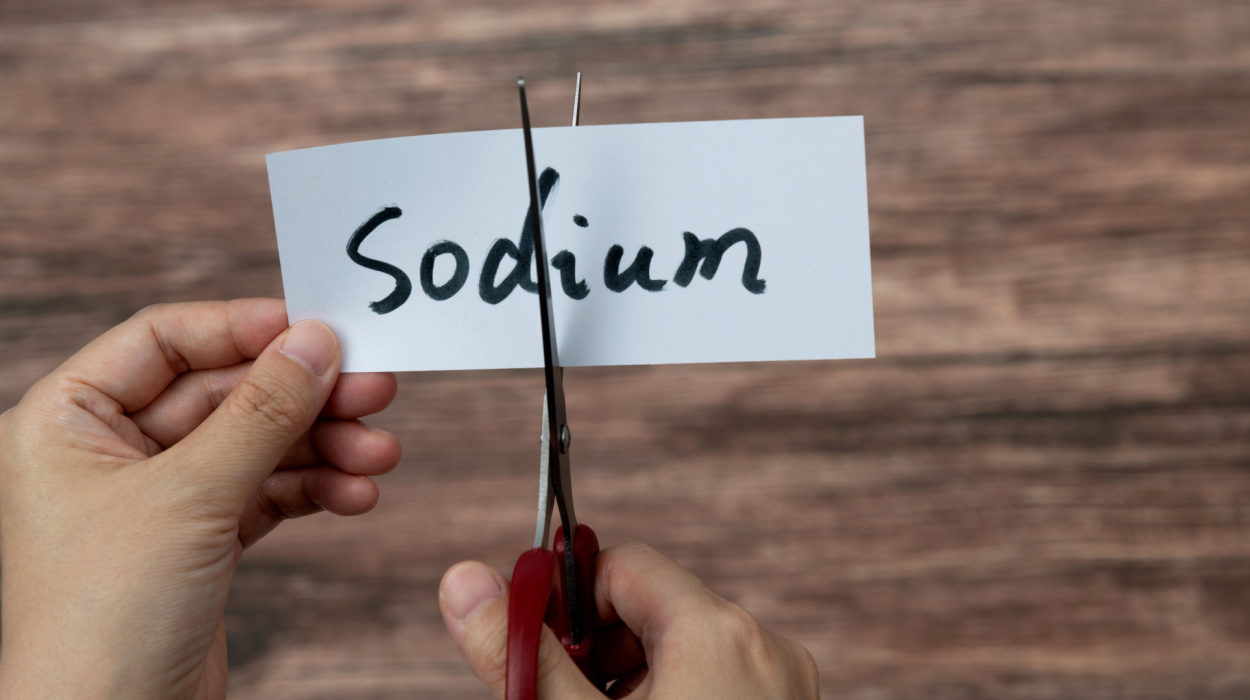You might have heard that a low-sodium diet can help you lose weight. While low-sodium diets may encourage weight loss, sodium should not be removed from the diet entirely. In small amounts, sodium,[1] a mineral found in salt, is an essential mineral because it provides necessary health functions.
This article explains how much sodium per day to lose weight is ideal for dieters and outlines sodium’s role in water retention.[2] Finally, this article reveals foods that contain excess salt and offers suggestions for healthier food choices.
Does Sodium Make You Fat?
No. Small amounts of sodium do not make you fat. However, excess sodium may cause water retention, which can contribute to weight gain. Reducing sodium, especially from processed foods which are also high in calories, may assist in weight loss.
How Much Sodium Per Day To Lose Weight?

Studies suggest that a low-salt diet can reduce body weight,[2] but not in the form of body fat. Rather, those who followed a low-sodium diet for two months just lost water weight.
No set amount is established for how much sodium a person needs a day to lose weight. Rather, it is best to have small amounts.[3] Don’t eliminate sodium altogether, but do not exceed 2,300 milligrams per day.
While sodium exists in many forms, Americans consume it mostly through table salt added to food. Monitor your salt intake to reduce sodium to one teaspoon a day. This means paying attention to what you eat inside the home as well as outside – excess salt is often added to processed foods[4] like cold cuts, bread, and pizza.
How Sodium Affects Your Weight
Studies indicate that increased salt consumption can cause the body to retain water. Being well-hydrated can help prevent and reduce water retention, whereas consuming excess salt can dehydrate[5] you, causing water weight.
Studies have also linked higher salt intake with an increased risk of obesity[6] in children and adolescents – independent of calorie intake.
Aside from weight gain, excess salt can increase the risk[7] of diabetes, cardiovascular disease, and osteoporosis. Consuming too much salt may also raise blood pressure[8] and compromise the immune system.[9]
Once you reduce salt in your diet, allow time for weight loss to happen. Results will vary from person to person and will depend on several factors, such as whether you are eating an overall healthy diet and practicing regular exercise.
If you are lowering your sodium intake, eating healthfully, and exercising but need additional weight loss support, ask your healthcare practitioner about diet pills, fat burners, and other supplements.
Recommended Daily Sodium Intake
Dietary guidelines advise having less than six grams[10] or 2,300 milligrams[3] of sodium per day.
This equates to one teaspoon of salt. However, most Americans consume more than 3,400 milligrams of sodium a day.
This recommended limit includes salt added before and after food is cooked, as well as any additional salt in sauces, condiments, and dressings you may add to your food.
How To Cut Down On Sodium

Cutting back on sodium is not as simple as reaching for pepper instead of salt when you’re cooking at home. A significant amount of dietary sodium comes from processed foods and foods prepared for us[3] at restaurants. Consider the following tips for reducing sodium[11] in your diet, both at home and while dining out.
Use Herbs And Spices
Salt adds flavor to food, but so do many herbs and spices that do not contain sodium. Experiment with herbs and spices such as pepper, turmeric, garlic, onions, chives, basil, cilantro, parsley, thyme, and rosemary.
Cut Back On The Sauce
Sauces, dressings, marinades, spreads, and dips are often made with salt. Consuming them, in addition to whatever salt has been added to your meal, can put you over the daily recommended amount of sodium. Reduce or opt for low-sodium versions.
Avoid Cured And Smoked Meat And Aged Cheese
Meat and fish that have been cured or smoked contain salt to maintain freshness. Aged cheeses are high in sodium because they must be salted as they age. Eating these foods can increase your sodium levels.
Choose Frozen Or Fresh Vegetables
Canned vegetables sometimes contain salt or sauces with salt. Read can labels carefully to see if there is salt mixed in with the vegetables. If so, choose frozen or fresh vegetables instead, which do not contain any added salt or sauces.
Read Labels
All packaged foods have ingredients and nutritional information that are listed on the packaging. Read the ingredients and nutritional facts before putting items in your cart. You may be surprised to learn how much salt is added to your favorite foods.
Cook At Home
The best way to oversee your salt intake is to prepare your meals at home. Any meal prepared at a restaurant will likely contain salt, and it can be difficult to gauge how much.
Low-Sodium Diet
A low-sodium diet is a diet low in salt. Foods on a low-sodium diet[12] include plenty of fresh produce, like whole grains, meat, fish, poultry, eggs, beans, dairy, and herbs and spices. For condiments and spreads, choose unsalted or low-sodium options.
A diet that is low in sodium emphasizes whole foods, such as fruits and vegetables,[1] because they naturally contain little, if any, sodium. Sticking to whole foods not only helps you reduce sodium but calories as well, as many foods high in sodium also tend to be high in calories.
While it’s important to keep sodium levels low, cutting sodium out of your diet is not advisable. A small amount of sodium is necessary for many bodily functions,[1] such as maintaining cell homeostasis, balancing fluid and electrolytes, and regulating muscle and nerve function, as well as regulating blood pressure.
Conclusion
Sodium, a mineral found in salt, is essential for many bodily functions. However, the body only needs a small amount to thrive. Dietary guidelines suggest consuming no more than 2,300 milligrams of sodium per day. However, the average American consumes over 3,400 milligrams a day.
Reduce your sodium intake to under 2,300 milligrams a day for weight loss – that’s one level teaspoon of salt. Swap out restaurant-prepared meals for home-cooked meals, cook your food at home, read food labels, and use other herbs and spices to season your food.
Frequently Asked Questions
It can be. Sodium can cause fluid retention in the body, which can cause bloating around the midsection. Reducing sodium and increasing water can help mitigate water retention and reduce belly water weight.
It can be. Less sodium is better for reducing water weight but not fat. However, reducing sodium alone will not influence weight loss significantly. A low-sodium diet should be followed.
Yes. Drinking more water can help flush out excess sodium and maintain proper fluid balance in the body. This can help prevent dehydration and water retention.
Excess salt intake can cause dehydration and elevated blood pressure. These may be signs that you consume too much salt and need to adjust your diet.
Processed foods such as bread, pizza, and cold cuts have a lot of added salt, as well as cured meats, sauces, condiments, and dressings. Foods prepared at restaurants may also contain excess salt.
Fresh or frozen fruits and vegetables, plain meats and fish, eggs, beans, and whole grains are all excellent choices on a low-sodium diet.
While too much sodium can raise blood pressure and should be avoided by those with high blood pressure, those with low blood pressure may need to increase their salt intake. Discuss this with your doctor.
Not necessarily. Cooking meals at home is a good way to reduce salt intake. You should cook at home whenever possible, but eating some meals out is okay. Ask for dressings and sauces on the side, and choose steamed dishes.
 Evidence Based
Evidence Based
